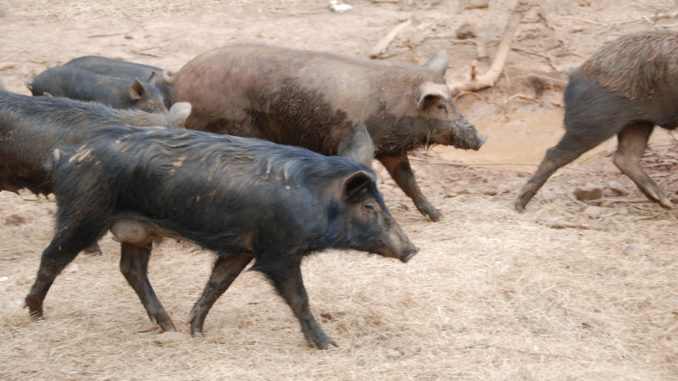
Wild hogs are not native to South Carolina or any part of North America; they are descendants of European domestic hogs that escaped or were released as far back as the early Spanish explorers. Closed-range or fencing requirements for livestock did not arise until the 1900s, and letting hogs “free range” was common before fencing laws. Here are some interesting facts about South Carolina’s wild hog population:
• The first true pigs brought to the United States came with by Hernando de Soto’s expedition to Florida in 1539.
• Wild hogs, aka feral pigs, have been documented in every county of South Carolina.
• Recent relocations of wild hogs by hunters appear to be responsible for the species populating areas where they were not found in the past.
• Wild hogs will eat both plants and animals, classifying them as omnivores.
• The natural life expectancy of a wild pig is six to eight years.
• Hogs typically breed in the winter and average six piglets per litter, most of which will survive for lack of natural predators.
• Wild hogs directly compete with deer and wild turkey for habitat and food, and hogs can do significant damage to the habitat and agricultural production through their rooting activities.
• State laws prohibit the import into the state or release into the wild of any hogs.
• According to studies done by wildlife researchers, hunters need to take 75 to 80 percent of the hogs from an area every year to keep the population in check.




Be the first to comment